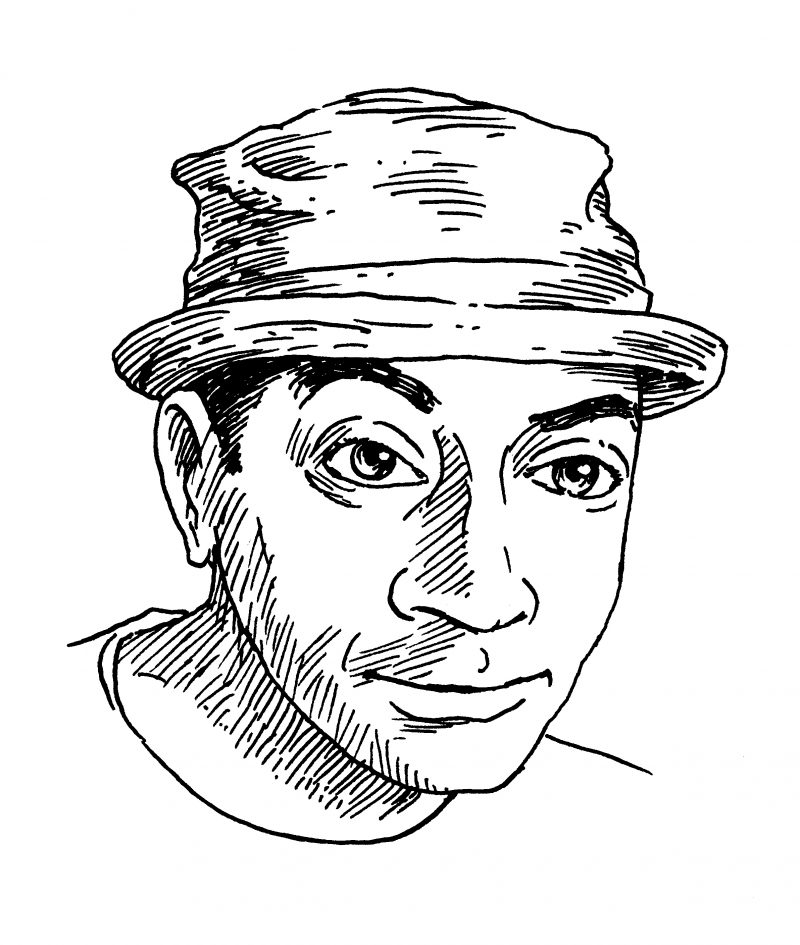Keith Knight is a cartoonist who has been doing running commentary on his own life for over a decade. His weekly strip, The K Chronicles, has been a fixture in alternative weeklies, and online at Salon magazine, since the mid-’90s. Drawn in a loose, noodling style, the strip riffs on a variety of topics: family relationships, life on the road with his “semiconscious” hip-hop band, the Marginal Prophets, observational humor, and politics. (He draws Bush as a boyish little homunculus.)
Taken together, the strips form something of a memoir-on-the-fly, though a deliberately suspect one. While there are real incidents and real characters (Keith’s wife, Kerstin, and his dad make regular appearances), there are also fictional characters (a lunkheaded ex-roommate named Gunther, for one), and events that deliriously skitter far outside the zone of plausibility. He’s less interested in the unvarnished “truth” of life than in the humor of it—he raids his own experience with the giddy zeal of a stand-up comic or an inveterate fibber.
In addition to The K Chronicles, Knight pens a weekly single-panel editorial strip, (th)ink, the SportsKnight strip for ESPN The Magazine, and two strips for MAD magazine, Bully Baby and Father O’Flannity’s Hot Tub Confessions. Most recently, he launched a syndicated daily newspaper strip, The Knight Life, which maintains the The K Chronicles’ balance of autobiography and fabrication while somewhat dialing back the scatology. Part of the kick of The Knight Life is seeing how close to inappropriate Knight is allowed to get, wedged between the Garfields and the Blondies of the world.
This interview was conducted in a café in the Mission District of San Francisco, a city Knight lived in for several years. (He relocated to Los Angeles in 2007.) He was in the city for a slideshow of his work, just ahead of the opening of an exhibit of his cartoons at the Cartoon Art Museum. Since the conversation took place, a number of topics that were in a state of immanence have actually come to pass—most momentously, the birth of his first child, and slightly less momentously, the publication of The Complete K Chronicles, a collection of ten years of his K Chronicles strips. In fact, both book and baby made their appearance on the same day.
Knight quickly commemorated the double event in The K Chronicles, demonstrating his desire to avoid the pitfalls of “cuteness” while keeping true to the autobiography of his new fatherhood. His son’s first appearance in the strip compels his parents to note how deliciously edible...
You have reached your article limit
Sign up for a digital subscription and continue reading all new issues, plus our entire archives, for just $1.50/month.
Already a subscriber? Sign in





